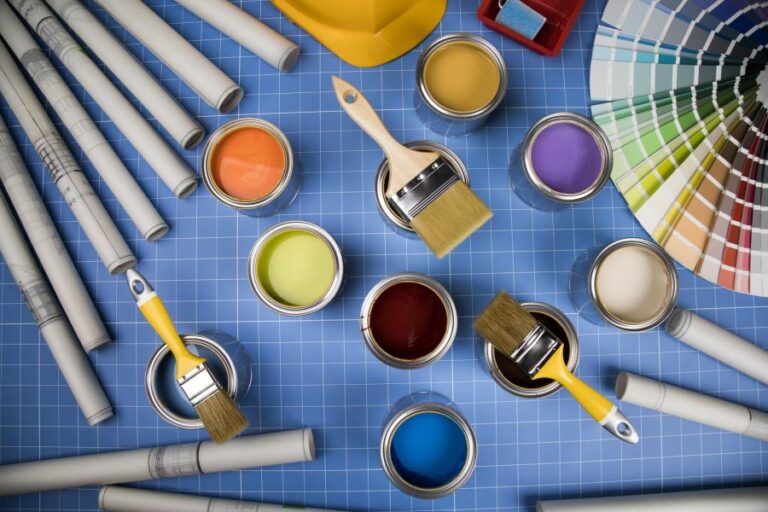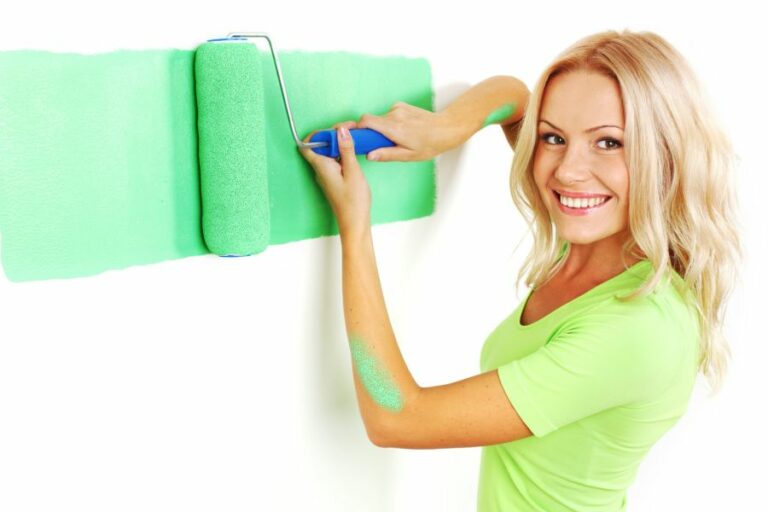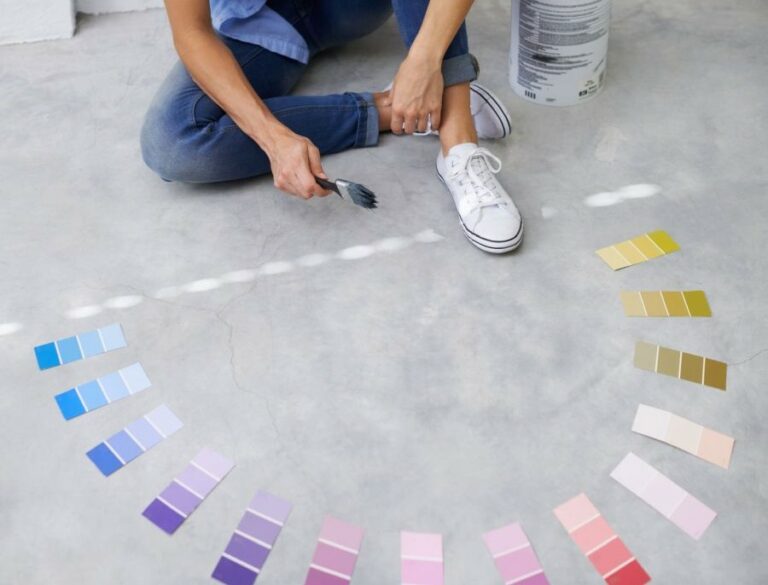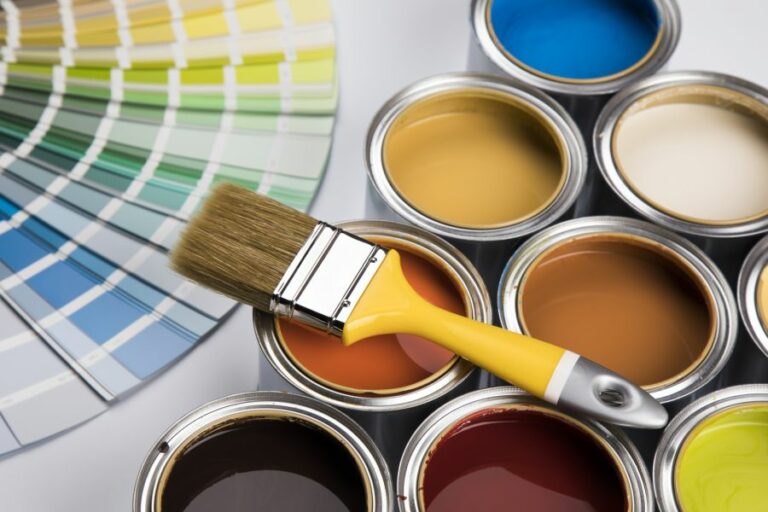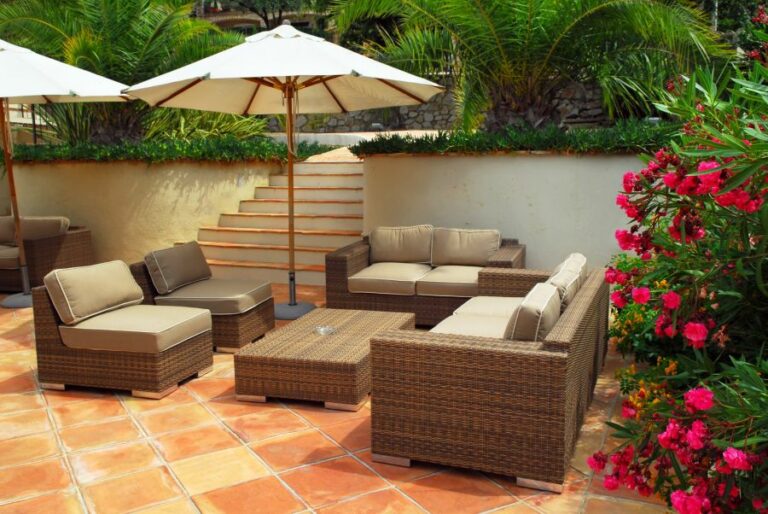Outdoor Stucco Paint, 25 Things You Should Know
If you’re looking to upgrade your home’s exterior and protect it from the elements, outdoor stucco paint is an excellent choice. With a wide variety of benefits and options, stucco paint can transform your home’s appearance and add lasting durability. Stick around as we dive deeper into what makes outdoor stucco paint a fantastic investment and the essential factors you should consider while choosing the right one for your home.
Outdoor stucco paint:
Outdoor stucco paint requires choosing the right type of paint, such as acrylic or elastomeric, and a suitable finish, like flat, satin, or semi-gloss. Proper preparation involves cleaning the stucco, repairing cracks, and applying primer. Use quality tools and follow the paint manufacturer’s guidelines for application, ensuring optimal durability with multiple coats.

Discover the incredible potential of outdoor stucco paint to transform your home’s exterior. Dive into a world of stunning textures, colors, and durable finishes that will breathe life into your space. Don’t miss out on our expert tips and tricks to achieve the perfect look with this versatile paint option.
Keep reading to unlock the true potential of stucco for your home!
Contents
- 1 Exterior Stucco Paint for Outdoor Surfaces
- 2 Exterior Paint That Mimics Stucco: A Comprehensive Guide
- 3 Which is more effective for painting stucco: using a spray or a roller technique?
- 4 Is it better to use flat or satin paint for stucco exteriors?
- 5 Exploring the Distinctions: What Sets Stucco Paint Apart from Regular Paint?
- 6 Is it Necessary to Apply Primer on Exterior Stucco Prior to Painting?
- 7 Is it Possible to Apply Paint Directly on Stucco Surfaces?
Exterior Stucco Paint for Outdoor Surfaces
Stucco is a popular choice for home exteriors, offering durability, energy efficiency, and a beautiful, distinctive appearance. However, stucco requires regular maintenance and repainting to keep it looking its best.
• Understanding Stucco Paint Types and Finishes
There are several factors to consider when selecting the best outdoor stucco paint for your home, including the type of paint and the sheen preference.
– Water-Based Paints: Acrylic and Elastomeric
When it comes to stucco, the most common and recommended paint types are acrylic and elastomeric. Both are water-based paints that offer excellent adhesion, breathability, and flexibility, making them suitable for stucco surfaces.
- Acrylic Paints: Acrylic paint provides good color retention and is generally easier to apply. It offers a relatively smooth finish, making it a popular choice for stucco surfaces. Quality acrylic paints can last up to 10 years before requiring repainting.
- Elastomeric Paints: Elastomeric paint offers a thicker, more flexible coating that can help to bridge small cracks and prevent water penetration. This type of paint is particularly useful for stucco surfaces located in harsh climates or areas prone to moisture issues. Elastomeric paint is generally longer-lasting than acrylic, with some brands offering a lifespan of 15-20 years.
– Sheen Options: Flat, Satin, and Semi-Gloss
In addition to the type of paint, you will also need to consider your preferred finish or sheen. Outdoor stucco paint comes in three main sheen options:
- Flat: A flat finish offers a non-reflective, matte appearance. Flat paint is ideal for hiding minor surface imperfections and is also the most forgiving when it comes to application.
- Satin: Satin paint offers a slightly glossy appearance, providing enhanced durability and easier cleaning compared to a flat finish. A satin finish is a popular choice for homeowners seeking a balance between appearance and practicality.
- Semi-Gloss: A semi-gloss finish offers a higher gloss level than satin, providing increased durability and ease of cleaning. It is rarely used on complete stucco surfaces but rather for accentuating trim, doors, and window frames.
• Preparing Your Stucco for Painting
Proper surface preparation is crucial for achieving a lasting, professional finish when painting stucco.
– Cleaning the Surface
First, thoroughly clean the stucco surface, removing any dirt, dust, mold, or mildew. A pressure washer is effective for this, but be cautious to avoid causing damage to the stucco. Allow the surface to dry completely before moving on to the next steps.
– Repairing Cracks and Holes
Next, inspect your stucco for any cracks or holes that require repair. Use an appropriate stucco patching compound to address any damage, allowing it to cure according to the manufacturer’s instructions. Sand the repaired area and surrounding stucco to ensure a smooth, even surface.
– Primer Application
Applying a primer to your stucco surface is highly recommended, as it improves adhesion, reduces paint consumption, and promotes a more uniform finish. Select a high-quality exterior stucco primer that is compatible with your chosen paint type, and apply it according to the manufacturer’s instructions.
• Painting Your Stucco: Tips for Professional Results
With your stucco surface properly prepared and primed, it’s time to apply the paint.
– Choose the Right Tools
Quality tools are essential for achieving a professional finish. Use a high-quality, synthetic-bristle brush for cutting in around trim and edges and a large nap roller (typically to 1 inch) for covering broader surfaces.
– Plan Your Painting Strategy
When painting stucco, it’s important to avoid painting in direct sunlight, as this can cause the paint to dry too quickly and result in an uneven finish. Also, be mindful of the weather; avoid painting on rainy days or when temperatures drop below 50°F.
– Apply the Paint
Always follow the paint manufacturer’s instructions for application, including diluting the paint if necessary. Apply the paint in a consistent manner, working from top to bottom in sections. Multiple coats are typically required to ensure even coverage and optimal durability.
Be sure to allow sufficient drying time between coats, as specified by the manufacturer.
• Conclusion
Repainting your stucco home can be a rewarding and cost-effective way to enhance curb appeal and protect your investment.
By selecting the right paint type and finish, properly preparing the stucco surface, and using best practices for application, you can achieve professional results that will stand the test of time.
Exterior Paint That Mimics Stucco: A Comprehensive Guide
Stucco, a popular exterior finish for buildings, is known for its textured, durable, and weather-resistant properties. However, not all surfaces are suitable for traditional stucco, and its installation can be time-consuming and labor-intensive.
This has led many homeowners and builders to ask: Is there an exterior paint that looks like stucco?
The answer is yes: there are several paint products designed to mimic the look of stucco, without the need for a full stucco installation.
• Acrylic Texture Coatings: A Versatile Alternative
One popular paint option that resembles stucco is acrylic texture coating. These coatings contain acrylic resins, sand, and other texturing materials, creating a finish that looks and feels like traditional stucco while providing added flexibility, durability, and UV resistance.
Additionally, acrylic texture coatings can be applied to a variety of substrates, including masonry, concrete, and wood.
A reputable product in the market is Parex USA’s Sand Fine, which offers a smooth, sand-textured finish similar to stucco. This water-based acrylic coating can also be tinted to desired colors, allowing for customization.
When applying an acrylic texture coating, it is crucial to follow the manufacturer’s instructions to ensure proper adhesion, curing, and appearance. A typical application process involves the following steps:
- Surface preparation: Thoroughly clean the surface, removing dirt, oil, and any loose materials.
- Primer application: Apply a recommended primer, which will enhance adhesion and improve the overall appearance of the final coat.
- Texture coating application: Using a brush, roller, or spray equipment, apply the acrylic texture coating with the desired thickness and texture.
- Finish: Allow the coating to dry and cure as per the manufacturer’s instructions.
• RollerRock: A Stone Finish Alternative
RollerRock, a product by Daich Coatings, is an exterior paint that provides a durable, natural-looking stone finish resembling stucco. This water-based, odor-free product can be applied to a variety of outdoor surfaces, including wood, masonry, and concrete.
Available in pre-tinted colors, RollerRock is formulated with real stone granules, which provide an authentic texture and enhance slip resistance. Applying RollerRock is relatively easy, following these essential steps:
- Surface preparation: Clean the surface to remove any dirt, grease, or other contaminants.
- Primer application: Apply Daich Coatings’ ElastoLock Waterproof Rubber Membrane primer, which ensures proper adhesion and water resistance and reduces the chance of paint peeling.
- RollerRock application: Using a textured roller, apply two coats of RollerRock, allowing the first coat to dry for at least 24 hours before applying the second coat.
- Sealant application: Apply Daich Coatings’ Hi-Build Ultra Sealer to protect the RollerRock finish and provide additional durability.
• Liquid Stucco: Offering Classic Stucco Look and Feel
Liquid Stucco, by Modern Masters, is a high-quality elastomeric coating that creates a stucco-like look and feel. This durable, weather-resistant, and flexible product can be tinted to desired colors or matched to existing stucco finishes.
The benefits of Liquid Stucco include easy application, excellent adhesion, and high resistance to common stucco issues like cracking, peeling, or fading. To apply Liquid Stucco, follow these steps:
- Surface preparation: Remove loose and peeling paint, wash the surface, and repair any cracks or holes.
- Primer application: Apply a recommended primer for best adhesion and performance.
- Liquid Stucco application: Using a standard paint roller, apply two coats of Liquid Stucco, allowing the first coat to dry according to the manufacturer’s instructions before applying the second coat.
- Finishing touches: If desired, apply a coat of clear protective sealer.
• Final Thoughts
In summary, there are multiple exterior paint options available that successfully mimic the look of stucco, including acrylic texture coatings, RollerRock, and Liquid Stucco.
By choosing the right product based on factors such as surface type, desired finish, and maintenance requirements, homeowners and builders can achieve the desired stucco appearance without the hassle of full stucco installation.
Always consult the manufacturer’s recommendations and guidelines to ensure the best results for your home or building project.
Which is more effective for painting stucco: using a spray or a roller technique?
Stucco is a versatile and durable exterior finish used on many homes and buildings. When it’s time to refresh the look of your stucco, there’s always debate about whether it’s better to spray or roll paint onto the surface.
• Advantages of Spraying Stucco
– Speed and Efficiency
One of the biggest advantages of using a paint sprayer to apply paint to stucco is that it’s much faster than rolling.
A paint sprayer can quickly cover large surface areas, while a roller might require multiple passes to achieve a consistent finish. This efficiency can be crucial, especially for large projects or when working under tight deadlines.
– Even Coverage
Spraying paint also allows for better and more even coverage on the stucco’s uneven texture. By adjusting the pressure, angle, and distance from the surface, a professional painter can achieve a consistent color and texture across the entire stucco surface with minimal effort.
– Accessibility
When it comes to those hard-to-reach areas or intricate architectural details on a stucco home, spraying is often the best solution. Using a paint sprayer enables you to reach small crevices, corners, and other challenging areas with less hassle than a paint roller.
• Disadvantages of Spraying Stucco
– Overspray and Masking
One of the downsides of spraying paint on stucco is the potential for overspray. It can be difficult to control where the paint ends up, and it can easily find its way onto windows, doors, and other surfaces not intended to be painted.
This problem requires extensive masking and protection of surrounding areas. This can be labor-intensive and time-consuming, offsetting some of the efficiency gains from using a sprayer.
– Equipment and Cost
Another disadvantage is that paint sprayers require more specialized equipment, such as a compressor, hose, and nozzle, which can be expensive to purchase or rent. Additionally, paint sprayers often require more maintenance than rollers, which can further add to the overall cost of the project.
• Advantages of Rolling Stucco
– Cost and Simplicity
Using a paint roller to apply paint to stucco is relatively inexpensive and straightforward. Rollers require minimal additional equipment and suit smaller budgets better.
Rolling can also be a more straightforward process for those who are not familiar with using a paint sprayer, making it more feasible for DIY homeowners.
– Control and Consistency
With a paint roller, you have more control over the amount of paint being applied and where it goes. This results in a more consistent finish, with potentially fewer touch-ups required.
Additionally, there is less chance of overspray and needing to spend time masking and protecting surrounding surfaces when using a roller.
• Disadvantages of Rolling Stucco
– Slower Application
Rolling paint onto stucco takes more time and physical effort than spraying. Stucco’s rough texture requires multiple passes of the roller to ensure complete coverage, which can be tiresome and time-consuming, especially for larger projects.
– Uneven Coverage
Another disadvantage of using a paint roller on stucco is the potential for an uneven paint finish. Stucco’s rough surface can be challenging to coat evenly with a roller, leading to a patchy and inconsistent appearance.
• So, Spray or Roll?
Based on personal experience and industry best practices, there is no definitive answer as to which method is better for all situations. Spraying paint onto stucco has its advantages, such as speed, efficiency, and even coverage.
However, overspray and the need for specialized equipment are concerns that should be considered.
On the other hand, rolling paint onto stucco can be a simpler and more cost-effective approach, allowing for more control and consistency in the application. The main downside is the slower application process and the risk of uneven coverage.
To determine the best method for your specific project, consider the size of the area being painted, your budget, your experience and comfort level with the equipment, and the desired finish.
In conclusion, there is no one-size-fits-all answer to the spray versus roll paint on the stucco debate. The best method will depend on the unique circumstances and requirements of your painting project.
By carefully considering the pros and cons of each technique, you can make an informed decision and ensure that your stucco looks refreshed and new for years to come.
Is it better to use flat or satin paint for stucco exteriors?
When choosing the ideal paint finish for a stucco exterior, homeowners often find themselves wondering whether to choose a flat or satin finish. Both finishes have their own set of advantages and drawbacks, making the decision a difficult one.
• Flat Paint Finish: An Overview
A flat paint finish, also known as a matte finish, is non-reflective and produces a smooth, even appearance on the surface. Flat paint is known for its ability to hide imperfections and provide a uniform look, making it a popular choice for stucco exteriors.
– Advantages of Flat Paint Finish
- Hides Imperfections: Flat paint is known for its ability to conceal small blemishes, cracks, and uneven surfaces on stucco exteriors. This makes it an ideal choice for older homes or those with visible surface imperfections.
- Easier Touch-Ups: In comparison to satin finishes, flat paint is easier to touch up as it blends well with the existing finish. This can be especially beneficial should it become necessary to repair or touch up an area of the stucco.
- Cost-effectiveness: Flat paint is often less expensive than satin paint, making it an attractive option for homeowners on a budget.
– Disadvantages of Flat Paint Finish
- Durability: Flat paint finishes are less durable and more prone to scuffing, dirt, and mildew compared to satin finishes. This may require more frequent repainting or cleaning.
- Cleaning Difficulty: Due to its porous nature, flat paint tends to absorb stains and dirt, making cleaning a challenge. The lack of sheen also means that dirt and stains are more visible on flat surfaces as compared to satin finishes.
• Satin Paint Finish: An Overview
A satin paint finish, also known as an eggshell or semi-gloss finish, features a slight sheen that reflects light, providing a subtle and elegant appearance. Satin finishes are more durable than flat paint finishes and are easier to clean.
– Advantages of Satin Paint Finish
- Durability: Satin paint finishes are known for their durability and resistance to wear, making them ideal for high-traffic areas of a home. This can result in longer periods between repainting, saving homeowners time and money.
- Easy Cleaning: Satin paint finishes provide a smoother surface that is more resistant to stains, dirt, and mildew. This makes cleaning easier, often requiring just a simple wipe-down with a damp cloth.
- Aesthetics: The subtle sheen offered by satin paint finish reflects light in a pleasing manner, providing an elegant and visually appealing appearance.
– Disadvantages of Satin Paint Finish
- Difficulty in Concealing Imperfections: Unlike flat paint finishes, satin paint does not easily conceal surface imperfections. This may require additional preparation, such as sanding and priming, before applying the paint.
- Higher Cost: Satin paint generally costs more than flat paint, which may make it a less appealing option for homeowners on a budget.
- Complicated Touch-Ups: Satin paint finishes can make touch-ups more noticeable, as the sheen can be difficult to match precisely. This may require repainting entire sections of the stucco exterior for a uniform appearance.
• Making the Decision: Flat or Satin Paint Finish for Stucco Exterior?
The decision between a flat and satin paint finish largely depends on your specific needs and preferences. Consider the following factors when making your decision:
- Condition of the Stucco Exterior: If your stucco exterior has visible imperfections, a flat paint finish may be the better option to provide an even and uniform appearance.
- Maintenance and Cleaning: If you prioritize low-maintenance and easy cleaning, a satin paint finish might be a better choice due to its durability and ease of cleaning.
- Budget: For those on a tight budget, a flat paint finish can be a more cost-effective option.
- Aesthetic Preferences: If you prefer a subtle sheen that adds a touch of elegance, a satin paint finish may be the ideal choice.
In conclusion, contemplating your specific requirements and preferences will help guide you towards the right decision. Consulting with a professional painter experienced in stucco exteriors can offer valuable insights and recommendations tailored to your home’s unique exterior characteristics.
Exploring the Distinctions: What Sets Stucco Paint Apart from Regular Paint?
Stucco paint and regular paint come with a set of characteristics that cater to various requirements, such as aesthetics, durability, and functionality.
• What is Stucco Paint?
Stucco paint is a special type of paint designed explicitly for covering stucco surfaces in both interior and exterior settings. Stucco is a plaster-like material made of sand, Portland cement, lime, and water, commonly used as a decorative coating in building exteriors.
Due to its porous and rough texture, stucco requires a specific type of paint that can meet its unique demands.
– Key Characteristics of Stucco Paint:
- Specific Formulation: Stucco paint is formulated with higher levels of binders and resins, which help maintain the durability and flexibility of the paint. These additives make the paint resistant to peeling, cracking, and water penetration.
- Breathability: Stucco is a breathable material, which means it allows moisture to escape the surface. Stucco paint is designed to provide adequate air and moisture transfer to ensure the durability of the stucco surface.
- Elongation: One of the significant challenges with painting stucco surfaces is its tendency to develop cracks. Stucco paint has higher levels of elongation, which enables it to expand and contract with the stucco surface, thereby minimizing the risk of cracking.
- Sheen: Stucco paint comes in various sheen options, ranging from flat to a subtle gloss. This variety allows homeowners to choose the level of glossiness that best matches their preferences and the architectural style of the building.
• What is Regular Paint?
Regular paint, also known as conventional paint or latex paint, is a versatile paint that can be used for various surfaces, including wood, drywall, brick, and concrete.
It contains a combination of ingredients such as pigments, binders, solvents, and additives that define its appearance, durability, and application properties.
– Key Characteristics of Regular Paint:
- Wide Application Range: Regular paint can be used on many surfaces, which makes it a popular choice for home improvement projects, including painting interior walls, ceilings, and trim.
- Adhesion: Regular paint offers reliable adhesion for most surfaces, ensuring the paint stays attached to the surface and resists peeling and chipping.
- Opacity: A significant advantage of regular paint is its ability to provide excellent coverage and hide imperfections on the surface. The higher the opacity of the paint, the fewer coats are required to achieve the desired finish.
- Drying Time: Regular paint typically dries quickly due to its latex or water-based formulation, allowing homeowners to complete their painting projects more efficiently.
• Comparing Stucco Paint and Regular Paint
Now that we have an understanding of the essential characteristics of both stucco paint and regular paint, let’s delve into the main differences between these two types of paints.
– Application Surface
The most apparent difference between stucco paint and regular paint lies in their application surfaces. Stucco paint is specifically engineered for use on stucco surfaces, while regular paint is versatile and suitable for a wide range of surfaces, including wood, drywall, and concrete.
– Formulation
Stucco paint comes with a unique formulation consisting of higher levels of binders and resins to ensure durability, flexibility, and resistance to weathering.
In contrast, regular paint has a balanced formula that caters to the needs of various surfaces without the heavy focus on durability and weather resistance required for stucco surfaces.
– Breathability
Stucco paint is breathable, allowing moisture to escape the surface and prevent water damage to the stucco substrate. Regular paint, on the other hand, may not offer the same level of breathability and air transfer, making it unsuitable for stucco surfaces that need to maintain their moisture balance.
– Elongation
Since stucco surfaces are prone to cracking, stucco paint is designed to offer superior elongation to minimize the risk of cracks. Regular paint does not necessarily possess this attribute, which makes it unsuitable for stucco surfaces that require flexibility.
• Recommendations for Choosing the Right Paint
Choosing the right paint for your painting project is crucial to achieving the desired outcome and ensuring the longevity of the paint job. Based on the differences highlighted above, here are some recommendations to guide your decision-making process:
- Assess the Surface: Identify the type of surface you need to paint and choose the paint that is specifically formulated for that surface. For stucco surfaces, opt for stucco paint, while regular paint is suitable for other surfaces like wood or drywall.
- Consider your Climate: If you live in a region with high humidity or extreme temperature fluctuations, it is essential to choose a paint that can withstand these conditions. Stucco paint, with its enhanced durability and weather resistance, may be a suitable option for such climates.
- Prioritize Breathability: For exterior surfaces, it is crucial to consider the breathability of the paint. While stucco paint offers excellent breathability for stucco surfaces, you may want to consult the paint manufacturer or a professional painter for recommendations on breathable paints for non-stucco surfaces.
To learn more about stucco paint and its properties, visit Portland Cement Association for valuable information and guidance.
In conclusion, understanding the differences between stucco paint and regular paint is vital in making an informed decision when undertaking a painting project.
By evaluating the unique characteristics of each paint type, you can choose the most appropriate paint to guarantee a successful and long-lasting paint job.
Stucco Paint | Regular Paint |
|---|---|
Specifically designed for stucco surfaces | Designed for various types of surfaces |
Typically acrylic-based and highly elastic | Can be acrylic, latex, or oil-based with varying elasticity |
Resistant to cracks and weather damage due to expanding and contracting with stucco | May not provide the same level of resistance to cracks and weather damage |
Breathable, allowing moisture to escape from the stucco surface | May not be as breathable, potentially trapping moisture and leading to damage |
Often contains additives to resist mold and mildew growth | May or may not contain mold and mildew resistive additives |
Is it Necessary to Apply Primer on Exterior Stucco Prior to Painting?
• Introduction to Exterior Stucco
Exterior stucco is a popular and durable exterior finish material that is commonly used for many homes and buildings.
Stucco is made from a mixture of cement, sand, and water and has a rough and porous texture. It is highly resistant to weathering, low maintenance, and can last for many years if properly maintained.
Many homeowners choose to paint their stucco exterior to refresh its appearance, change its color, or add a protective layer. However, there is often confusion and debate about whether or not it’s necessary to use a primer before painting exterior stucco.
• The Importance of Priming Stucco Before Painting
There are several reasons why priming stucco before painting is recommended. Below are the main reasons that a primer should be applied before applying your finish coat:
– Proper Adhesion
One of the main benefits of using a primer is to ensure that the paint will adhere properly to the surface. Stucco is a porous material, and without a primer, the paint may not create a strong bond, leading to peeling or flaking over time.
A primer will help seal the surface and provide a consistent base for the paint to adhere to.
– Enhancing Color
Using a primer can also improve the appearance of the paint. By providing a uniform base, a primer helps the paint color to appear more consistent and vibrant.
This is especially important when painting over a dark or patchy stucco surface, as a primer can help to prevent the underlying color or texture from showing through the paint.
– Reducing the Number of Coats
Applying a primer can also help to reduce the number of paint coats needed for full coverage. Stucco can be highly absorbent, and without a primer, you may find yourself needing to apply multiple coats of paint to get the desired coverage and finish.
Using a primer will help create a more uniform and less absorbent base, allowing the paint to cover with fewer coats and potentially saving you time and money.
– Protection and Durability
Finally, a primer can help to protect the stucco surface and prolong the life of the paint job. A quality primer will assist in sealing the surface against moisture and alkali content, potentially preventing issues like mold growth or efflorescence.
It can also add an extra layer of protection from weathering and UV exposure, contributing to a longer-lasting and more durable paint job.
• Choosing the Right Primer for Exterior Stucco
There are numerous types of primers available on the market, each with their specific benefits and use cases. When it comes to priming exterior stucco, you should look for the following qualities in a primer:
- 100% acrylic or elastomeric
- High alkali resistance
- Moisture resistant
- High adhesion
These qualities will ensure that the primer is suitable for use on stucco surfaces and will assist in creating a durable and long-lasting paint job.
As an example, the LATEX-ITE Gal. White Water-Based Acrylic Stucco Primer is specifically designed for use with stucco surfaces.
• How to Prime and Paint Exterior Stucco
To ensure a successful paint job on your stucco exterior, follow these simple steps:
- Clean the Surface: Remove any dirt, dust, mildew, or debris from the stucco using a pressure washer or a soft brush, and a mild detergent. Make sure the surface is completely dry before moving on to the next step.
- Repair any Damage: Inspect the stucco surface for any cracks, holes, or other damage, and repair them using a stucco patching material. Allow the repair to cure as per the manufacturer’s recommendations.
- Apply the Primer: Use a high-quality primer specifically designed for stucco surfaces, and apply using a brush, roller, or airless sprayer according to the manufacturer’s instructions. Allow the primer to dry completely before moving on to the next step.
- Apply the Paint: Choose a high-quality, acrylic-based paint that is formulated for use on stucco surfaces. Apply as instructed using a brush, roller, or airless sprayer, covering the primer completely. Allow the paint to dry, and apply a second coat if necessary for full coverage.
- Inspect and Touch-up: Inspect the stucco surface for any missed spots, uneven coverage, or other issues, and touch up as necessary using the same paint material.
• Conclusion
In conclusion, priming exterior stucco before painting is a critical step in ensuring that the paint adheres properly, appears more vibrant, and lasts longer.
By choosing a high-quality, stucco-specific primer and following the recommended process for painting stucco, you can refresh and protect your home’s exterior for years to come.
Is it Possible to Apply Paint Directly on Stucco Surfaces?
Stucco is a versatile and durable exterior finish material that is commonly used in residential and commercial construction. However, many homeowners and property owners might wonder if it is possible to paint directly on stucco. The good news is that you can, and it is relatively simple to do so!
• Preparing the Surface
Before you can start painting your stucco, it is essential to prepare the surface adequately. Failure to do so may result in adhesion problems, leading to unnecessary paint issues down the road. Here are some steps to follow in preparing your stucco surface for painting:
– Clean the Surface
The first step is to clean the stucco surface thoroughly. Stucco is porous and can accumulate dirt, mildew, and grime over time, which can interfere with paint adhesion. Use a pressure washer or simply a garden hose with a spray nozzle to remove any build-up from your stucco.
Be sure to use a lower-pressure setting, as you do not want to damage the stucco. You may also opt to use a mild detergent on the surface with a soft-bristled brush to remove stubborn stains or discoloration.
– Repair Cracks and Damage
It is essential to address any cracks or damage to the stucco before painting. Stucco can develop hairline cracks over time due to settling or temperature fluctuations. Use an exterior-grade caulk or a stucco repair product for minor cracks. For larger cracks, consider using a stucco patching compound.
Follow the manufacturer’s instructions and allow the repairs to cure for the recommended time before painting. Repair of larger cracks or damages should be done by an experienced professional.
– Allow the Stucco to Dry
After cleaning the surface and repairing any damage, give the stucco ample time to dry. Painting over wet stucco can lead to paint failure and peeling. It is generally recommended to wait at least 48 hours, or longer, depending on your local weather conditions, before proceeding with painting.
• Choosing the Right Paint
When it comes to painting stucco, using the right type of paint is crucial. The following considerations should be made when selecting paint for stucco:
– Acrylic or Elastomeric Paint
For stucco surfaces, acrylic or elastomeric paint is highly recommended. Acrylic paint is well-suited for stucco due to its durability, flexibility, and ability to expand and contract with the stucco as it shifts.
Elastomeric paint, which is a type of acrylic, is even more flexible and capable of bridging minor cracks in the stucco, making it an excellent choice for older or damaged surfaces.
– High-Quality Paint
Always opt for high-quality paint when painting stucco. While cheaper paint options may save money upfront, they are more likely to fade or peel over time, requiring more frequent touch-ups or repainting. High-quality acrylic paint will ensure a long-lasting finish.
– Appropriate Sheen
Select a sheen that is appropriate for your stucco surface. A flat or low sheen is generally recommended, as it will minimize surface imperfections and provide an attractive appearance. However, if you live in a hot or humid climate, a higher-sheen paint can offer more durability and resistance to mildew.
• Painting the Stucco
Once the surface is prepared, and the appropriate paint has been selected, it is time to paint the stucco. Use the following steps as a guideline for a successful outcome:
– Apply a Primer
A primer is recommended, especially for previously unpainted stucco surfaces, as it can improve adhesion, ensure a uniform appearance, and help extend the life of the paint. Choose a masonry primer specifically designed for use on stucco.
– Use the Right Tools
For best results, choose a high-quality paint roller with a thick nap (3/4″ to 1″). This will help the paint to penetrate the textured surface of the stucco more effectively. You may also need a brush for cutting in corners and edges.
– Paint in Ideal Weather Conditions
Whenever possible, plan to paint your stucco in ideal weather conditions. Painting in direct sunlight, high temperatures, or high humidity can potentially cause paint to dry too quickly, leading to adhesion problems. It is best to paint on a moderately cool, overcast day.
– Apply Two Coats of Paint
While one coat may initially provide sufficient coverage, applying two coats of paint will ensure a longer-lasting, more durable finish. Allow the first coat to dry according to the manufacturer’s directions before applying the second coat.
• In Conclusion
Painting stucco is a relatively simple process that can be accomplished with the right preparation, paint selection, and application techniques. By following the steps outlined in this article, you can achieve a beautiful and durable finish for your stucco surface.


